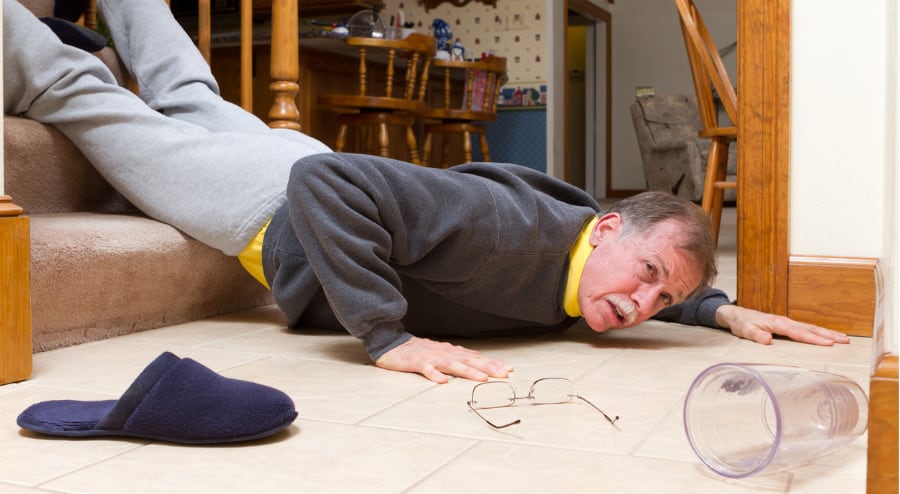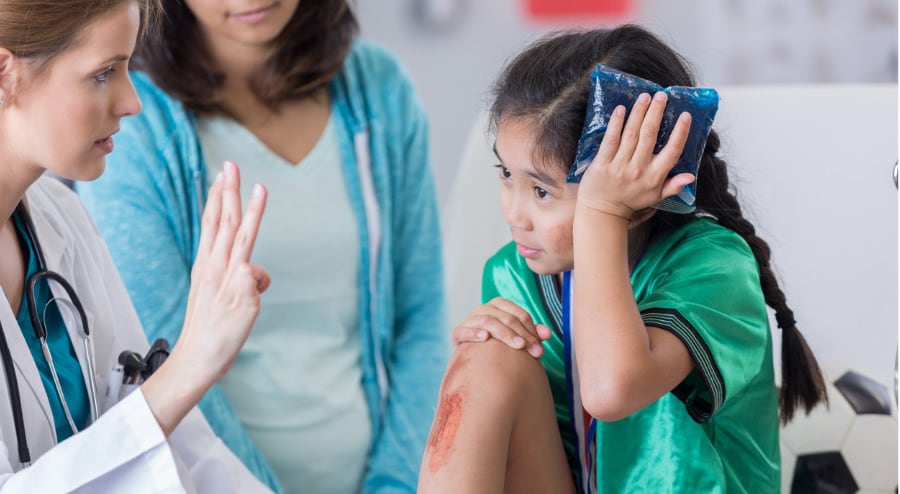While the old commercial “I’ve fallen and I can’t get up!” has certainly sparked its share of bad jokes, falls themselves are no laughing matter. According to the Centers for Disease Control and Prevention, falls are the leading cause of injury and death in seniors. In 2014, older Americans experienced 29 million falls, resulting in 7 million injuries.
Falls aren’t only a problem for seniors. Older adults, adolescents, children, and babies are all at risk as well, especially in households without a plan in place to prevent falls in the home. The CDC reports that falls are the most common cause of traumatic brain injuries for people in every stage of life, and result in 800,000 total hospitalizations in America each year.
The takeaway? If you want to prevent falls, here are some important steps to take.
Causes of Falls
For seniors, the causes of falls range widely. An older person may have a seizure, stroke, or heart attack, and fall in the process. Or they may trip, stumble or slip, which becomes increasingly common with age. Some medications cause dizziness and loss of balance, while vision loss can make it hard for seniors to see obstacles in their path. And low strength means that when seniors do fall, they’re less likely to catch themselves in time.
Again, though, falls happen to others as well. Healthy adults and children may fall due to vision problems, sleepiness, or a simple failure to look where they’re going. After surgery is an especially common time to fall, both in the hospital and once at home. Babies and toddlers fall because they lack the coordination, strength and balance to recover should they trip, slip or take a misstep down the stairs.

However, falls are most often a combination of some compounding medical issue and a factor in the physical environment. That might include:
- Pets underfoot
- Slick surfaces inside (bathrooms and kitchens)
- Slick surfaces outside (walkways and driveways)
- Incorrect use of ladders and step stools
- Loose flooring
- Bad lighting
- Cluttered walkways
- Bad footwear
- Stairs
Reducing the accidents associated with falls differs depends on population group, but there are several major precautions you can take to reduce the chances of anyone falling in your home.
Protecting Young Children from Falls
Because they tend to be more active, children naturally have more falls. Your job as a caregiver is not to prevent falls altogether, but to prevent those which could cause lasting injury or death. Here are some steps to take:
- Block stairs with baby gates.
- Prevent window falls by installing window locks or widow bars.
- Make sure that railings for landings, porches, and other features are in good repair, that they’re tall enough to prevent climbing, and that uprights are spaced narrowly enough to prevent a child from slipping through.
- Ideally, you should fence off water features such as ponds and pools, and restrict access to pools in particular with substantial fencing and locking gates.

If your child or a child in your care does fall, make sure to monitor them for the next day or so. Watch for symptoms such as irregular breathing, uneven pupil size, loss of consciousness, and other warning signs. If you see any, call a pediatrician right away. You may wish to call an advice nurse after the fall no matter what, especially if the knock was a particularly hard one.
Protecting the Elderly
Seniors are most susceptible to falls because their bodies simply don’t work as well. Medications, decreased muscle mass, and other conditions pose dangers, but you can mitigate these by getting advice from a doctor. The Mayo Clinic advises that you discuss with your doctor your medications (or those being taken by a member of your household), previous falls, and health conditions to make the best plan about your living situation and implement safety measures in the home.
- Seniors should always wear sensible shoes—in the home and outside of it.
- Avoid placing cables or other obstacles in commonly used pathways.
- Good lighting is essential in a household where seniors live.
- If necessary, install assistive devices such as hand rails, nonslip treads, grab bars, raised toilet seats and shower seats.
Seniors should not be on the roof or using ladders, and, depending on coordination, should possibly not have access to step stools either. If you’re not sure whether you or a loved one should be using a ladder, you should again seek a physician’s opinion.
Clean Indoor Spaces
One of the best ways to reduce falls is to maintain clear and uncluttered indoor spaces. Reduce the amount of furniture in the home, if needed, and pick up newspapers, boxes and décor to create enough indoor space to walk. The Mayo Clinic also recommends:
- Securing loose rugs.
- Removing loose carpeting.
- Keeping commonly used walkways clear of clutter and power cables.
- Getting plant stands, magazine racks and other small items out of the way.
- Storing food, clothing, and other necessities within easy reach.
- Wiping up spills immediately
- Using nonslip mats in the shower or bath
Falls are just a fact of life. No matter how hard you try, you may not be able to prevent them entirely, in which case the best course of action is to remain calm in an emergency and call on the appropriate professionals as quickly as possible. If you put the above precautions in place, however, you’ll greatly improve your and your loved ones’ chances to stay healthy and injury-free.

